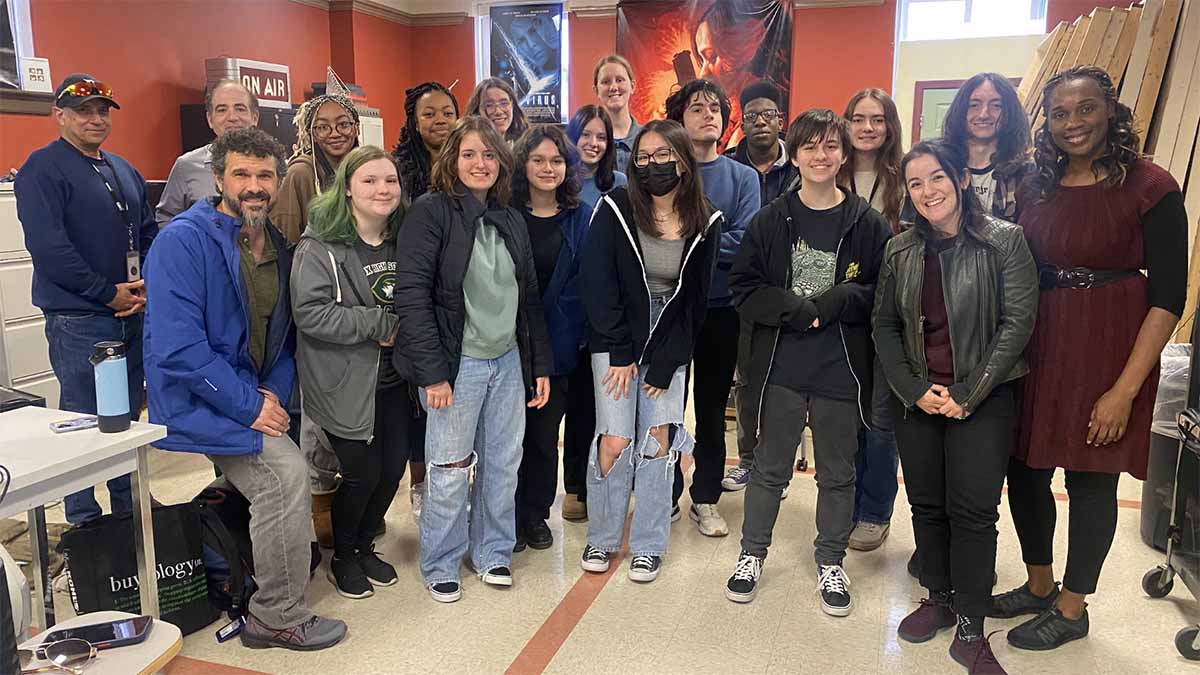Local students have been working hard to learn about video production and science in a partnership with NOVA Science Studio. The NOVA Science Studio is a program that aims to empower youth — especially those that are underrepresented in STEM—to tell engaging science communication stories about the issues that matter to them.
This year, NOVA Science Studio is collaborating with two PBS stations—WHRO Public Media in Norfolk, Virginia, and WKAR in East Lansing, Michigan—to teach the next generation of science communicators how to produce short-form science videos about the impact of climate change on their communities. Students at Granby High School and The Governor’s School for the Arts are participating in the project.
“The students have been tasked with identifying different aspects of sea level rise that affect them in their daily lives,” explained Jason Kypros, the project coordinator. “This is not just rising waters but also identifying alternate environmental catalysts that contribute to the rising sea levels locally and what we can all do to help mitigate those effects.”
Students began their projects by crafting story pitches and reaching out to community experts for more information and to secure interviews. It’s a great exercise for the students, Kypros said, because it requires them to think critically about a real-world problem. It also exposes them to the process of filmmaking and teaches them critical skills.
Guided by NOVA staff, producers at WHRO and WKAR, and local educators, student reporters have a substantial journalism toolkit that they can pull from as they produce their videos, from production and interviewing tips to industry knowledge around copyright and fair use.
“This experience encourages them to work together in teams, ask critical questions of themselves and others and to meet deadlines,” Kypros said. “The entire process of taking an idea from thought to page to video is both challenging and rewarding.”
When it comes to the NOVA reporting process, Kalob H., a high school junior in Davison, Michigan says: “We learned to not change people’s opinion, just present the evidence. We want to show them the facts and not tell people what to believe.”
In addition to an ambitious science journalism curriculum, student reporters are motivated to investigate how climate change is impacting their communities on a local level, and what solutions might be available. Several Davison High School students were recently featured on their local news broadcast for their story on extreme weather events and cherry tree farming.
Student reporter Montana A. is reporting on a story about food waste, and as part of the program she filmed interviews and b-roll with both the University of Michigan and Michigan State University's sustainability programs: “As a newbie and freshman, I have learned so much more in person," says Montana. "I learned how to put myself out there and (traveled) to places I’ve never been before."
"Having feedback and meeting with people who care about what we do gives insight into our future professional careers," says Rubie S., a high school senior in Elsie, Michigan who is reporting on solar energy.
Learn more about NOVA Science Studio.
Watch student-produced videos on YouTube.
NOVA Science Studio is also part of NOVA's Climate Across America initiative, with major support from the Corporation for Public Broadcasting.
Major funding for Weathering the Future and the Climate Across America Science and Society Project is provided by the Corporation for Public Broadcasting. Additional funding is provided by the GBH Planet Future Fund.
Funding for NOVA is provided by the NOVA Science Trust, the Corporation for Public Broadcasting, and PBS viewers.

